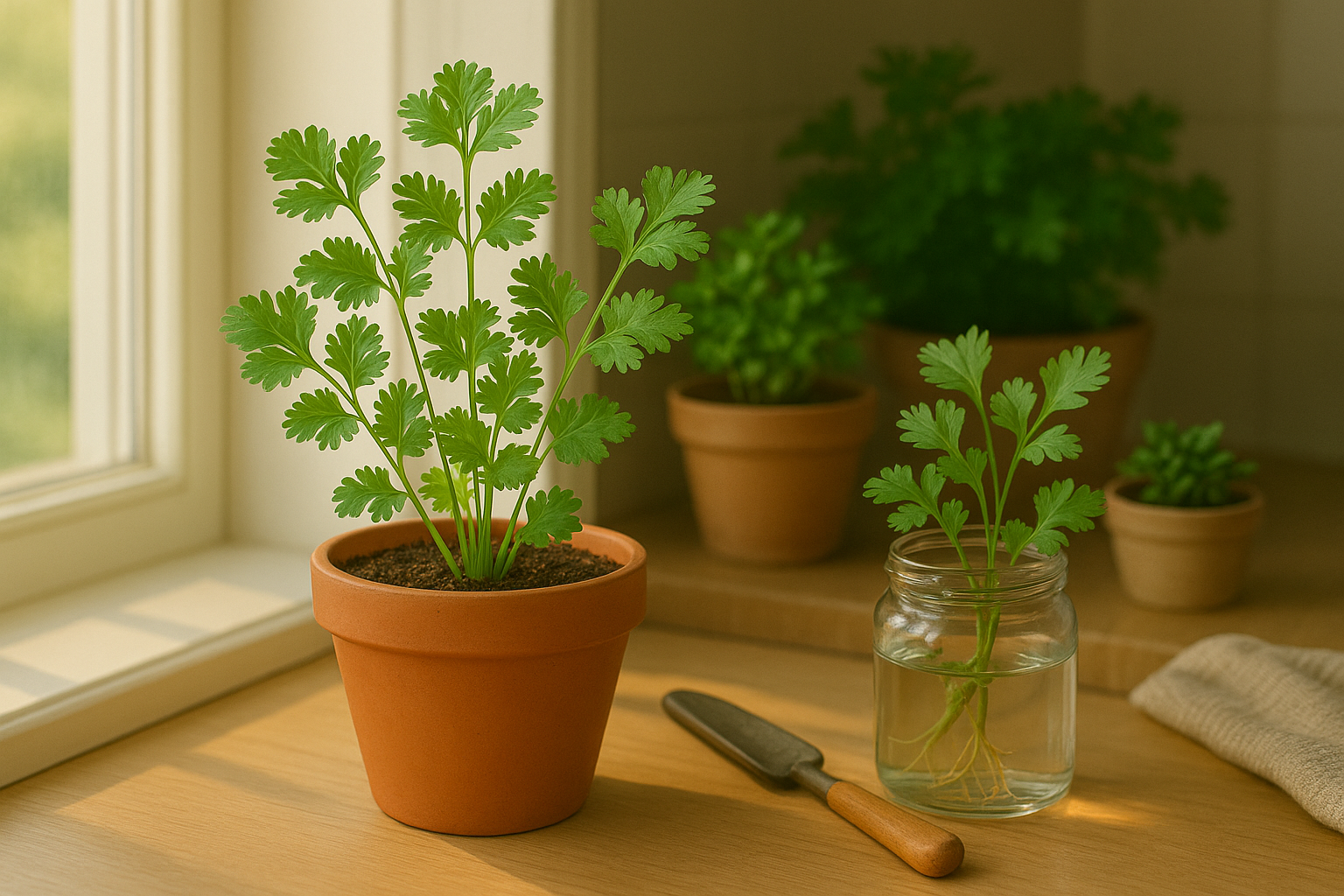Introduction
Cilantro is one of those must-have herbs that adds a fresh zing to just about any dish, and luckily, it’s easy to find in most grocery stores. But have you ever wondered if you could regrow cilantro from stems after bringing home a bunch from the produce section? It’s a question many home cooks and budget-conscious shoppers ask, especially if you find yourself tossing out wilted bunches too soon.
Imagine plucking vibrant cilantro straight from your windowsill garden, all while saving a few bucks and reducing kitchen waste. Besides, there’s something satisfying about giving your herbs a second life instead of letting them head to the compost bin.
In this post, we’ll tackle the ins and outs of regrowing cilantro from store-bought stems. You’ll discover whether it truly works, practical tips for rooting and planting your stems, and simple steps to set up your own endless supply. Ready to enjoy fresher cilantro with less waste and more savings? Let’s dig in!
Understanding Cilantro’s Growth Habits
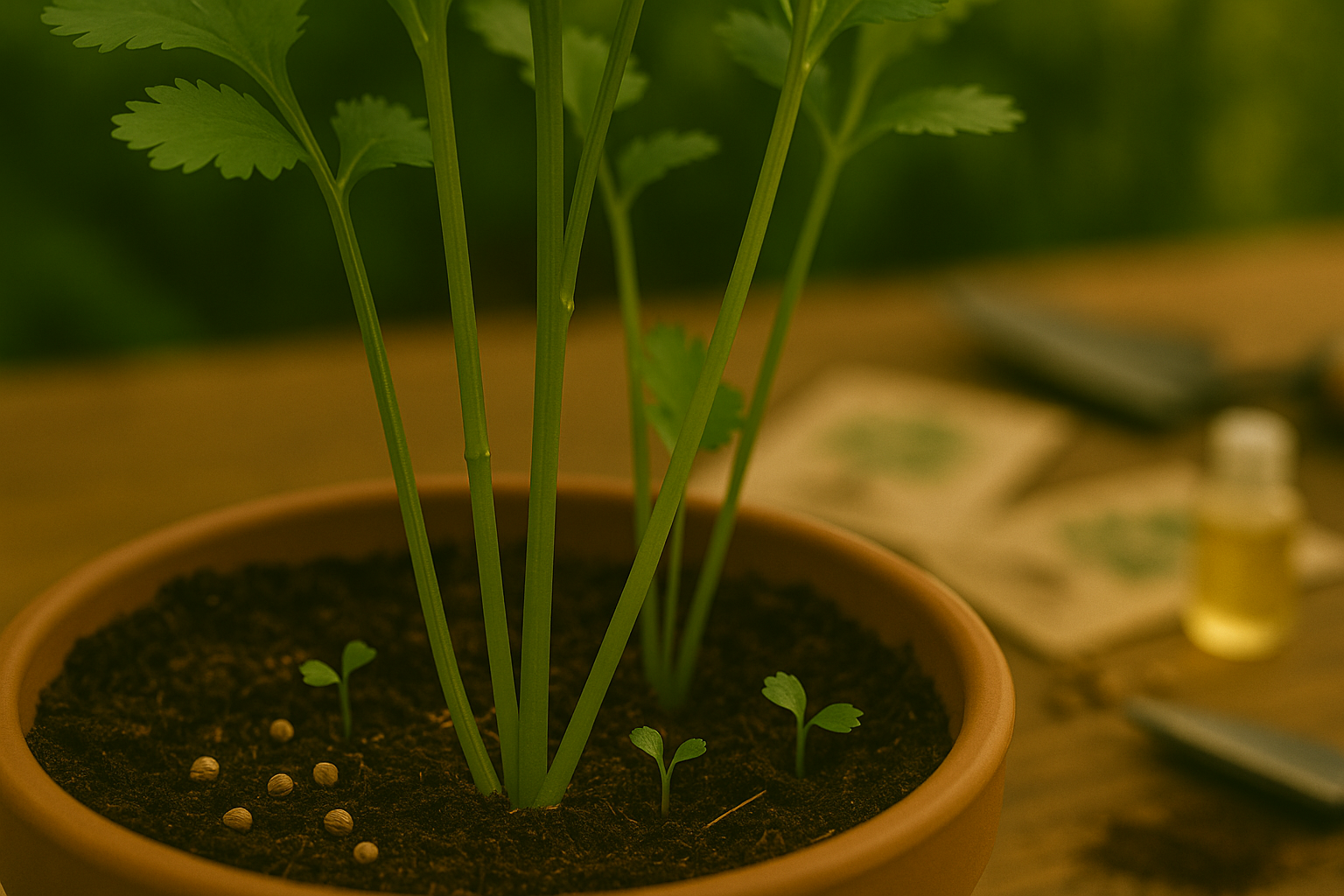
When you buy cilantro at the store, you’ll usually find bunches with leafy stems and sometimes a small portion of the roots or the very bottom of the stems still attached. However, most store-bought cilantro is trimmed above the roots, which affects how it regrows.
Cilantro is a fast-growing annual herb, and understanding its life cycle is key if you want a continuous supply. Once cilantro bolts (flowers), the flavor of the leaves changes, so it’s best to harvest leaves before flowering.
For regrowth, having intact roots is ideal because cilantro grown from rooted stems can reestablish more reliably and produce new growth, especially if you place them in water or moist soil right away. If roots aren’t present, you can sometimes encourage roots from the lower stem nodes—these are the small bumps where leaves or branches emerge—by placing the bottom stems in water and changing it daily until roots appear. However, this method is hit or miss compared to starting from seed.
Growing cilantro from seed requires a bit of patience but is often preferred for long-term harvests: plant seeds directly in well-drained soil, keep them moist, and you’ll see sprouts in one to two weeks. With seeds, you get a stronger root system and a more robust plant, while growing from cuttings is quicker but may not yield as large or healthy a harvest.
Ultimately, both methods can supplement your kitchen, but starting from seed is best for a full cycle of regrowth.
Can You Regrow Cilantro from Grocery Store Bunches?
Regrowing cilantro from grocery store bunches is possible, but only under specific conditions—namely, that the stems you purchase have intact roots or at least visible nodes (the small bumps along the stem where leaves or roots can grow). Most grocery store cilantro is trimmed above the root to maximize shelf life and appearance, meaning the lower part crucial for rerooting is missing.
Occasionally, especially at farmers markets or some organic stores, you’ll find cilantro sold with roots attached. In these cases, gently rinse the roots and place the stems in a glass of water, changing the water every few days and keeping the jar away from direct sunlight. If roots start to grow longer after about a week, pot them in moist soil to encourage further development—cilantro flourishes better in soil over time, as water alone won’t provide the nutrients needed for a healthy, productive plant.
However, cut cilantro with no nodes or roots rarely regrows; myths about sprouting endless herbs from a basic cut stem are largely wishful thinking. For best results, propagating cilantro from seed is the most reliable method, as the plant has a short life cycle and tends to bolt quickly when stressed.
If you want a small kitchen crop, look for bunches with intact roots or nodes, and remember that soil transplanting is the key step. Success rates can be hit-and-miss, so don’t be discouraged if a batch doesn’t take—experimentation and fresh seed sowing might be your best bet for a lush, lasting supply of cilantro at home.
Step-by-Step Guide to Regrowing Cilantro from Grocery Store Cuttings
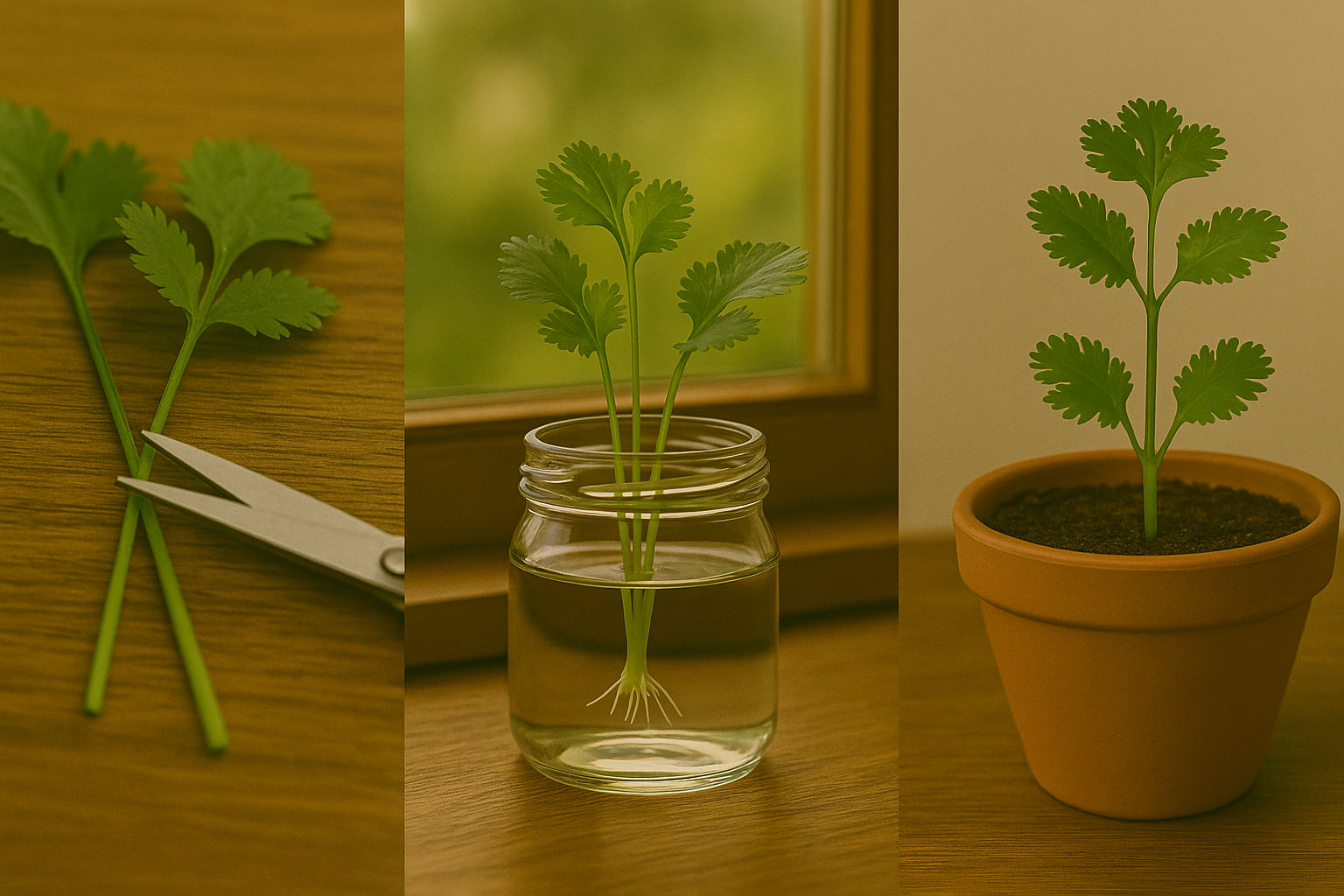
Regrowing cilantro from grocery store cuttings is a simple and rewarding way to keep fresh herbs on hand. Start by selecting healthy stems—look for green, firm stalks about 4-6 inches long. If your cuttings have some roots attached, that’s a bonus, but rootless stems work too.
Water Propagation
For water propagation, trim the cut end just below a leaf node (where leaves sprout) and remove the lower leaves so the stem doesn’t rot in water. Place the cutting in a glass of room-temperature water, making sure only the bottom inch is submerged. Set it on a sunny windowsill, changing the water every couple of days to keep it fresh. You should see white roots forming within a week or two.
Direct Soil Planting
If you want to try direct soil planting, fill a small pot with well-draining potting mix. Poke a hole with your finger and gently insert the stem. Water well, but don’t overdo it—keep the soil moist but not soggy.
Light and Care Tips
Whether propagating in water or soil, cilantro prefers bright, indirect light. Too much heat or harsh sun can cause wilting, so avoid placing it in hot windows or under intense grow lights. If you notice drooping leaves, check moisture levels and reduce watering if the stem feels mushy—this often indicates rot.
Additional Tips for Success
- For cuttings wilting after planting, lightly cover the pot with a plastic bag to retain humidity while roots form.
- Use a small pot with drainage holes to avoid waterlogging.
- Move your new plant to a slightly larger container once strong roots develop.
With a little patience and attention to light and water, your cilantro cuttings can thrive and provide a fresh supply for your kitchen recipes.
Essential Care Tips for Young Cilantro Plants
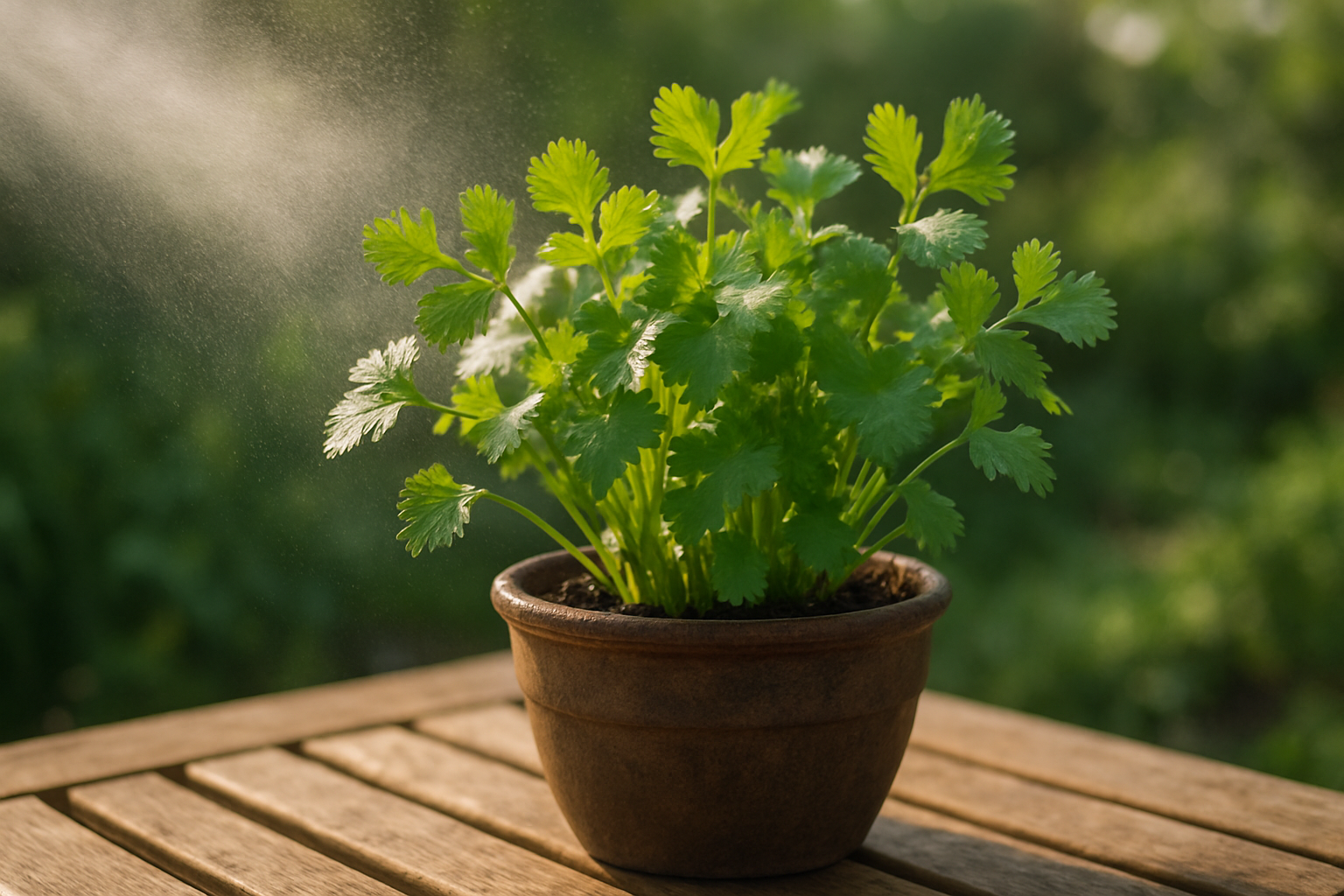
Caring for young cilantro plants is all about finding the right balance of water, sunlight, and nutrients. Start by watering cilantro deeply—but only when the top inch of soil feels dry. Overwatering is a common mistake that leads to droopy leaves and root rot. Make sure your pot or garden bed drains well, as cilantro hates soggy roots.
When it comes to sunlight, cilantro prefers a spot with morning sun and afternoon shade, especially in warmer climates; too much direct sun can scorch tender seedlings. Aim for a temperature range between 60°F and 75°F. Cold snaps can stunt growth, while heat above 85°F may cause the plant to bolt and go to seed too early.
Fertilize sparingly. A light feeding with a balanced liquid fertilizer every 2–3 weeks supports healthy growth without overwhelming the young plants. Beware of common care mistakes like using heavy soil, letting seedlings dry out completely, or crowding them too closely, as these can encourage pests and fungal issues.
Healthy young cilantro shows deep green, feathery leaves and sturdy stems that don’t flop or turn yellow. In contrast, struggling plants may look pale, wilt easily, or grow leggy and thin. If you notice any of these signs, check soil moisture, sunlight, and airflow, and adjust your care routine.
With the right attention, you’ll have a vibrant crop ready to flavor your favorite dishes in just a few weeks.
How (and When) to Harvest Regrown Cilantro
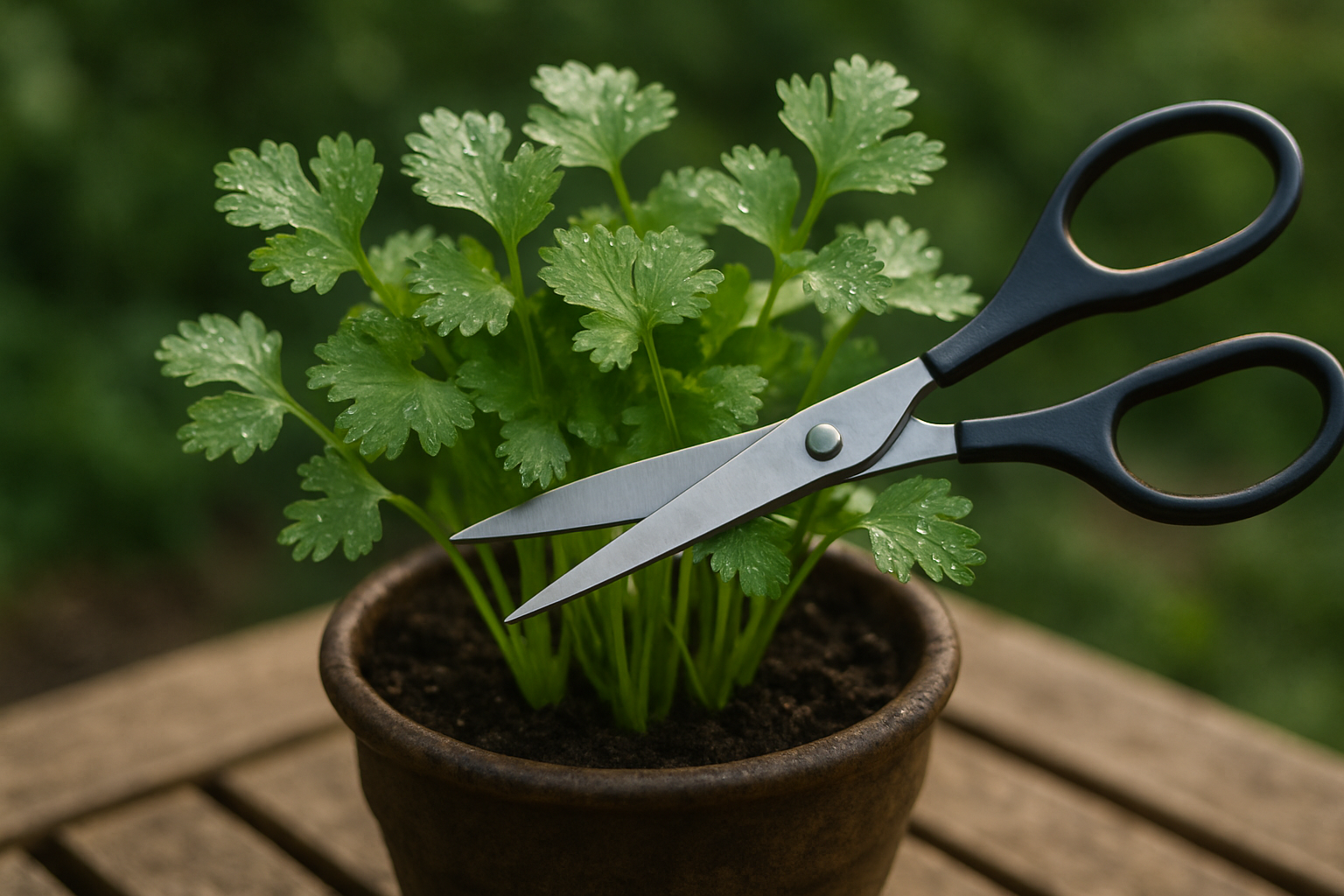
Harvesting regrown cilantro at the right time ensures the tastiest, most aromatic leaves and promotes ongoing healthy growth. Start snipping once your cilantro has at least four to six inches of fresh, green growth—a good sign it’s strong enough to handle a trim.
Use clean scissors to cut the outer leaves about an inch above the soil, leaving the inner stems and smaller leaves untouched; this encourages new shoots to grow and keeps the plant bushy. Aim to harvest in the morning when leaves are at their juiciest and most flavorful.
Don’t cut more than a third of the plant at once, as overharvesting can stress the roots and slow regrowth. To keep your cilantro producing, pinch off any flower buds as soon as they appear—this prevents the plant from “bolting” (going to seed prematurely) and encourages more leafy growth.
With good care, regrown cilantro can often be harvested three to five times, though each cut may yield slightly less than the last. Always keep the soil moist and provide indirect sunlight for the best results. Remember, patience and gentle harvesting go a long way in getting the most from your regrown cilantro patch.
Conclusion & Troubleshooting Common Issues
Growing healthy plants from cuttings is rewarding and easier than you might think—just remember to keep cuttings moist, use clean tools, and provide plenty of indirect sunlight. Don’t get discouraged if things don’t work perfectly the first time; experimenting with different soil types or rooting methods can help you find what works best for your space.
If your cuttings start wilting, check that they’re not sitting in direct sun and mist them lightly—overexposure or under-watering is a common culprit. For poor growth, make sure you’re using fresh potting mix and that your cutting still has at least one node; sometimes adding a rooting hormone can speed things along.
If nothing seems to root, double-check the parent plant’s health and try making a fresh cut below a leaf node to encourage better uptake. Everyone’s growing conditions are unique, so what works for one person might not suit another. The best way to learn is to try, observe, and adjust.
Have you run into tricky propagation problems or found a method that works wonders? Share your stories or questions in the comments—we’d love to hear what’s worked for you or help troubleshoot further!
